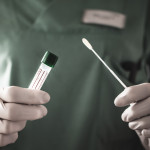Years ago, when I went to my first HIV doctor’s appointment, he reviewed a list of specific sexual activities in an effort to ascertain how, exactly, I had contracted the virus.
I wondered why he needed to know the details of my sex life. How I got HIV was not germane to how he planned to treat me for it. Did it really matter whether I contracted the virus through vaginal or anal intercourse? Whenever I ask my general practitioner to test my cholesterol levels, he doesn’t ask whether I’ve been scarfing down a lot of Big Macs. He just takes my blood, no questions asked, and gives me the results.
Profiling people based on their sexual activity in order to guess whether they may be living with HIV is counterproductive. Anyone who has ever had unprotected sex even once may have been exposed to HIV and should be tested. One of the reasons we are having trouble stopping the spread of HIV is that too many people, including doctors, believe a person has to engage in “high-risk behavior” to contract the virus.  This misconception is one of the reasons so many women are contracting HIV, especially women of color, and why they are diagnosed so late. The stories of the three wonderful women we profile in “Sisters Act” highlight why women are especially vulnerable to HIV and show why women and doctors need to be vigilant about testing—even if a woman is perceived to be at “low risk.”
This misconception is one of the reasons so many women are contracting HIV, especially women of color, and why they are diagnosed so late. The stories of the three wonderful women we profile in “Sisters Act” highlight why women are especially vulnerable to HIV and show why women and doctors need to be vigilant about testing—even if a woman is perceived to be at “low risk.”
While we perhaps need to talk less about sex when trying to determine risk, we need to talk more about it in general to keep people sexually safer. An unwillingness to discuss sex—especially anal sex—has proved a barrier to the development of vaginal and rectal microbicides. Funders and even scientists squirm when the issues of vaginas and anuses come up; however, people’s willingness to discuss these body parts and how to prevent them from being portals to HIV can save lives.
It’s time the world understood that talking about sex teaches people how to have healthy and safer sex. And it’s time we acknowledge the “well-kept secret” that anal sex is not the exclusive domain of gay men—many straight people have anal sex. A 2005 CDC study estimated that 40 percent of men and 35 percent of women between ages 25 and 44 engaged in heterosexual anal sex. And many young people engage only in oral and anal sex under the auspices they are preserving their “virginity.” And, since we often don’t talk to kids about HIV, they don’t know they’re at risk. This is part of the reason 34 percent of new HIV infections are among people younger than 30. The, well, bottom line is we’re talking explicitly about sex in places we don’t need to (in the doctor’s office, after people have already been infected) and not talking about it in places we should (the world at large, health classes, the media).
We’ve got it all ass-backward. The world should take a lesson from the smart folks at the International Rectal Microbicide Advocates (read about them in “The Anal Dialogues,”). By learning to calmly and maturely discuss our specific body parts and how we protect them from retroviruses, we will be able to spare many more lives. No ifs, ands or buts about it.
Regan Hofmann
Editor in Chief
Email: editor-in-chief@poz.com






4 Comments
4 Comments